GeorgiaTech
Latest

Georgia Tech researchers teach robots to be mechanical MacGyvers
There weren't many sticky situations that '80s television action hero MacGyver couldn't slip out of with the help of a disposable lighter, penknife and two tabs of Alka Seltzer. His unconventional application of scientific principles and outside the box thinking were what made him such a formidable opponent week after week. Now, a team of researchers from Georgia Tech's RAIL research lab is working to impart those same survival skills into robots.

Researchers want to power pacemakers with cotton-based biofuel cell
Researchers at the Georgia Tech and Korea University believe they have found a way to power implantable medical devices like pacemakers with a new fuel cell made from cotton fiber. The glucose-powered biofuel cell could provide twice as much power as conventional options.
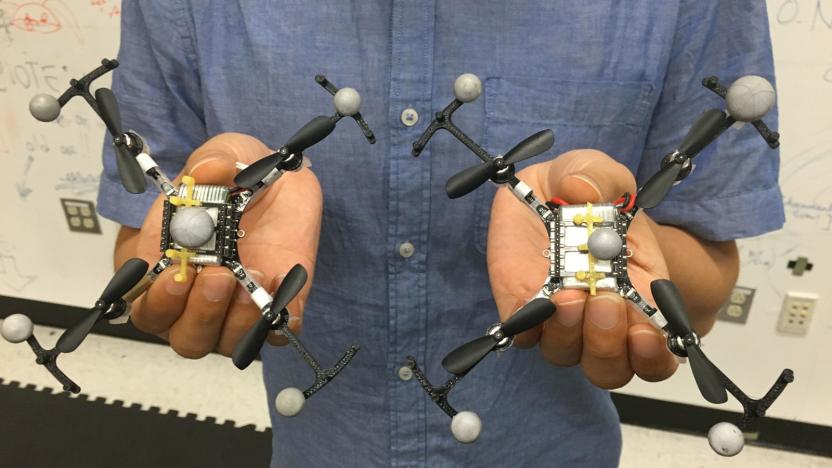
Virtual 'top hats' ensure swarming drones won't crash
Drone swarms can be used for lots of things, like creating holograms, putting on a Superbowl halftime show or collecting military intelligence. One of the problems with a bunch of quadcopters executing maneuvers in close proximity, however, is that they can crash when they touch or fly under each other. Researchers at the Georgia Institute of Technology have found a way to avoid both issues by creating a virtual bumper area around each copter so that they don't accidentally touch. They've also ensured that each copter has a little "top hat" of space above it so it won't go underneath another drone and get caught up in its airflow.
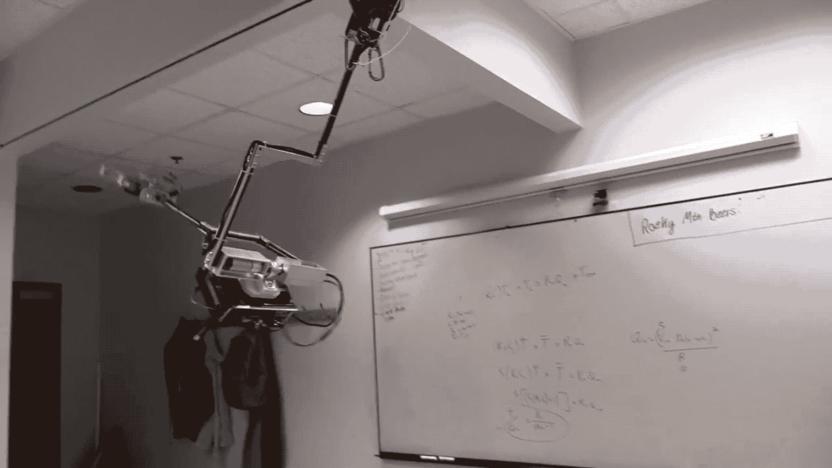
Tarzan the swinging robot could be the future of farming
Some farmers already use drones to monitor their crops, but a team of researchers from Georgia Tech have created a far more interesting alternative. Instead of designing yet another drone, they created a robot inspired by Kristen Bell's favorite animal: the sloth. However, they named it "Tarzan" after the most recognizable character who moves by swinging from vine to vine. You see, their machine was designed to move like the fictional jungle dweller. Tarzan will be able to swing over crops using its 3D-printed claws and parallel guy-wires stretched over fields. It will then take measurements and pictures of each plant with its built-in camera while suspended.

ICYMI: Amazon wants to revolutionize grocery shopping
try{document.getElementById("aol-cms-player-1").style.display="none";}catch(e){} Today on In Case You Missed It: Amazon created a smart store in Seattle which is currently open to just employees but next year will open to all. It lets people saunter in, grab whatever they need, then leave without formally checking out. The trick is in using the Amazon Go app and all the sensors within the store, which track which items are placed in a basket and charges shoppers accordingly. Meanwhile, Georgia Tech created a 'TuneTable,' an interactive table with moving coaster-sized tiles people use to both program and then play music. If you're interested, the Guinness Book of World Records video for candles is here, and the behind-the-scenes video from Rogue One is here. As always, please share any interesting tech or science videos you find by using the #ICYMI hashtag on Twitter for @mskerryd.

Six energy-harvesting gadgets powered by people
By Cat DiStasio People power is perhaps one of the world's greatest untapped sources of renewable energy. Smart devices that harness kinetic energy from everyday human activities help the environment in more ways than one. By turning motion into useable electricity, human-powered gadgets help reduce reliance on fossil fuels and batteries that damage the planet. At the same time, kinetic gadgets encourage people to keep moving, thereby supporting a healthier lifestyle. From a dance floor that turns your sweet moves into a luminous display to a clever motion-powered light that keeps runners safe at night, we've rounded up six amazing gadgets that take advantage of human movement.

ICYMI: All aboard the world's largest boat elevator
try{document.getElementById("aol-cms-player-1").style.display="none";}catch(e){}Today on In Case You Missed It: The Three Gorges Dam in China is home to the largest ship elevator, hauling up to 3000 tons of cargo from one lower level of water to the higher stream at the top. Meanwhile, Georgia Tech engineers believe their new fabric, which can harvest energy from both movement and the sun, will revolutionize how we keep devices charged. The three baby parent video is here, and the crystallizing salts are here. As always, please share any interesting tech or science videos you find by using the #ICYMI hashtag on Twitter for @mskerryd.

Uber's self-driving cars, and more in the week that was
It's official: Self-driving cars are here. This week Uber's autonomous taxi fleet picked up its first passengers in Pittsburgh, while Ford announced that its self-driving car will have no steering wheel, gas pedal, or brakes. Ford is also working on cars that can harvest drinking water from thin air -- and then dispense it from a dashboard tap. In other auto news, the Chevy Bolt scored an EPA-certified driving range of 238 miles -- further than the base Tesla Model S. Tesla sued an oil exec for allegedly impersonating Elon Musk to steal trade secrets. And design studio Duffy London debuted the solar-powered super yacht of the future.

ICYMI: Soon flying UAVs could pick stuff up; carry it away
try{document.getElementById("aol-cms-player-1").style.display="none";}catch(e){}Today on In Case You Missed It: A large format hexacopter with mechanical gripper arms is all set to swoop in on your backyard and move some chairs around. Going by the Prodrone's YouTube video, it can carry 10 kilograms.

ICYMI: Better walking bot and an anti-aging breakthrough
try{document.getElementById("aol-cms-player-1").style.display="none";}catch(e){}Today on In Case You Missed It: Georgia Tech overhauled its DURUS robot to walk with a human-like gait that makes it the most efficient bipedal robot. Scientists at the EPFL did some solid research into the pomegranate fruit that shows it can counteract disease and extend the life of worms by 50 percent and endurance in rodents by 40 percent. Human trials are happening now. You can see the latest 3D bone printer here and what the FBI has been doing with iris scans, here. As always, please share any interesting tech or science videos you find by using the #ICYMI hashtag on Twitter for @mskerryd.
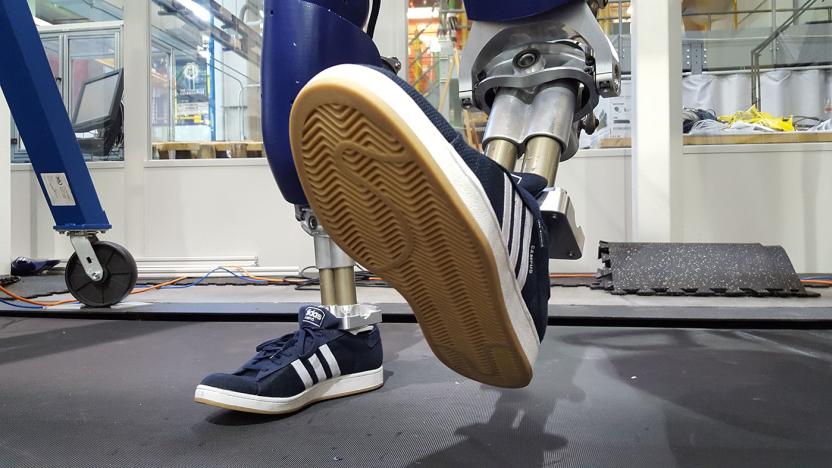
Georgia Tech's DURUS robot has a more natural human-like stride
Last time we saw the DURUS robot walking like a human, it was still doing so relatively flat footed. The folks at Georgia Tech's AMBER-Lab have improved the robot's movements to incorporate even more human-like heel strikes and push-offs. As you can see in the video below, the new range of motion gives DURUS a more natural stride, and the ability to wear some sweet sneakers. Until about a week ago, the robot shuffled along flat footed before getting a pair of new metal feet with arches soles. After some tweaking of the algorithms and a few falls, DURUS now strides like the rest of us.

ICYMI: Chocolate science, firefighter tech and more
#fivemin-widget-blogsmith-image-876193{display:none;} .cke_show_borders #fivemin-widget-blogsmith-image-876193, #postcontentcontainer #fivemin-widget-blogsmith-image-876193{width:570px;display:block;} try{document.getElementById("fivemin-widget-blogsmith-image-876193").style.display="none";}catch(e){}Today on In Case You Missed It: You may want to switch careers after seeing the chocolate formula MIT researchers got to dig into; Georgia Tech came up with a heads up display for biometric tracking and environment information for firefighters; and Blue Origin landed its rocket for the third time, like bosses. Also someone made a drone with a functioning chainsaw and you can see the destructive video here. As always, please share any great tech or science videos you find by using the #ICYMI hashtag on Twitter for @mskerryd.

ICYMI: Trusting robots too much, automated garbage and more
#fivemin-widget-blogsmith-image-528017{display:none;} .cke_show_borders #fivemin-widget-blogsmith-image-528017, #postcontentcontainer #fivemin-widget-blogsmith-image-528017{width:570px;display:block;} try{document.getElementById("fivemin-widget-blogsmith-image-528017").style.display="none";}catch(e){} Today on In Case You Missed It: The Georgia Tech Research Institute studied how people would react to a robot with clearly labeled 'emergency guide' signage, during a fire drill. Researchers thought humans would ignore the robots and go straight for nearby exits, but instead, they followed the robots deeper into the building, where there was no way out.
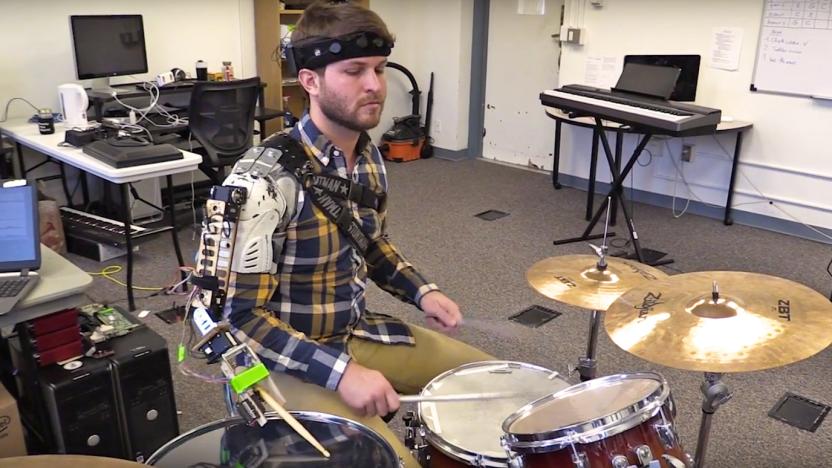
Robotic arm gives drummers an extra hand to thrash with
Let's face it: most of us will never be great drummers. Despite our stellar air drumming skills, it's just not going to happen -- no matter much we listen to Neil Peart. Researchers at Georgia Tech developed a robotic arm that gives drummers an extra arm to help boost those skills. The project from the university's Center for Music Technology aims to push the limits of what humans can do with a hand, er, arm from smart robotics. In this case, the device attaches to a drummer's shoulder and reacts to changes in tempo and movement. If the musician moves to the high-hat, the arm knows to switch to the ride cymbal, for example.

ICYMI: Floating wind farm, autonomous robot delivery & more
#fivemin-widget-blogsmith-image-570480{display:none;} .cke_show_borders #fivemin-widget-blogsmith-image-570480, #postcontentcontainer #fivemin-widget-blogsmith-image-570480{width:570px;display:block;} try{document.getElementById("fivemin-widget-blogsmith-image-570480").style.display="none";}catch(e){}Today on In Case You Missed It: Delivery company Starship Technologies will begin testing sidewalk-scooting autonomous delivery robots next year in London and the U.S. They can go up to 4 miles-per-hour and carry about 20 pounds worth of whatever it is you've ordered. Scotland's coast will be home to Europe's largest offshore wind farm. And Georgia Tech researchers are studying fire ants to try to engineer self-healing materials.

Researchers are helping robots avoid expensive face plants
Why are robot tumbles comedy gold? Unlike humans, they make no effort to protect themselves, resulting in flailing, extra hard falls (bottom). But the high-g impacts are hell on the extremely expensive, often one-of-a-kind machines, so researchers from Georgia tech developed algorithms to give them some sense of self-preservation. They made them copy exactly what we do instinctively -- stick out a limb to break the fall. "(That way), every time you make contact with the ground, some of the energy is dissipated," said Georgia Tech professor Karen Liu.

Georgia Tech's AI is a choose-your-own adventure author
Turns out it's not just news writers (gulp) whose jobs are in jeopardy -- even fiction authors like RL Stine might have to watch their backs. A group of researchers from Georgia Institute of Technology has designed an AI that can write up interactive fiction (IF), such as choose-your-own adventure stories. You know, those books that ask you to turn to a specific page in the book (or to click a link, if it's on the computer) based on which action you want to choose from a selection. They named it Scheherazade-IF, obviously after the Arabian queen-slash-storyteller in One Thousand and One Nights.
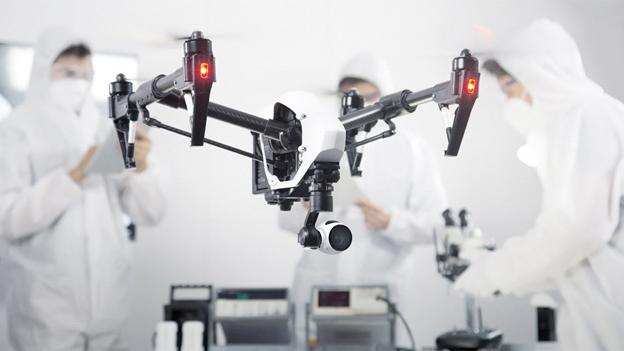
CNN teams with the FAA to make drones work for news gathering
CNN has been looking into the prospect of using drones for news reporting for months, but it now has an important ally in its corner: the FAA. The two organizations have forged a research agreement that will create an official framework for UAV use by the American press. CNN hopes this will move the media beyond "hobby-grade equipment" (instead, think pro drones like the DJI Inspire 1) and establish a safe way to produce quality news footage with robotic aircraft. There's no estimate for when this would happen, but CNN, its existing partner Georgia Tech and the FAA have already started coordinating their efforts. You may not have to wait too long before your local news network is covering breaking stories with a swarm of unmanned machines.

Snake robot climbs sand dunes by mimicking sidewinders' slithering
Snakes can pretty much slither anywhere they want, inspiring many (and we mean many) military and educational institutions to try and recreate them in robotic form. Carnegie Mellon University, in particular, has been developing a robotic snake for years -- one that a team of researchers from various organizations recently tweaked to mimic the movements of a sidewinder. Why? Because prior to the update, it couldn't even climb sandy slopes inclined by about 10 degrees. The group, which has been observing snakes for a long time and has found out the secret behind sidewinders' ability to scale sand dunes, programmed the robot to replicate their unique slithering. Carnegie Mellon roboticist Hamid Marvi says it can now "climb on inclinations of up to 20 degrees on loose sand," all thanks to this upgrade.

Google Glass can tell if you're stressed
It's not always easy to tell when your stress levels are through the roof, and you may not always want to break out a heart rate sensor just to find out when it's time to relax. You might not have to, if researchers at Georgia Tech and MIT have their way; they've developed BioGlass, an Android app that uses Google Glass to determine how frazzled you are. The software measures your heart and breathing rates by checking for tiny movements picked up by Glass' accelerometer, gyroscope and front-facing camera. In theory, you'd only have to wear the smart eyepiece to know when it's time to calm down.








